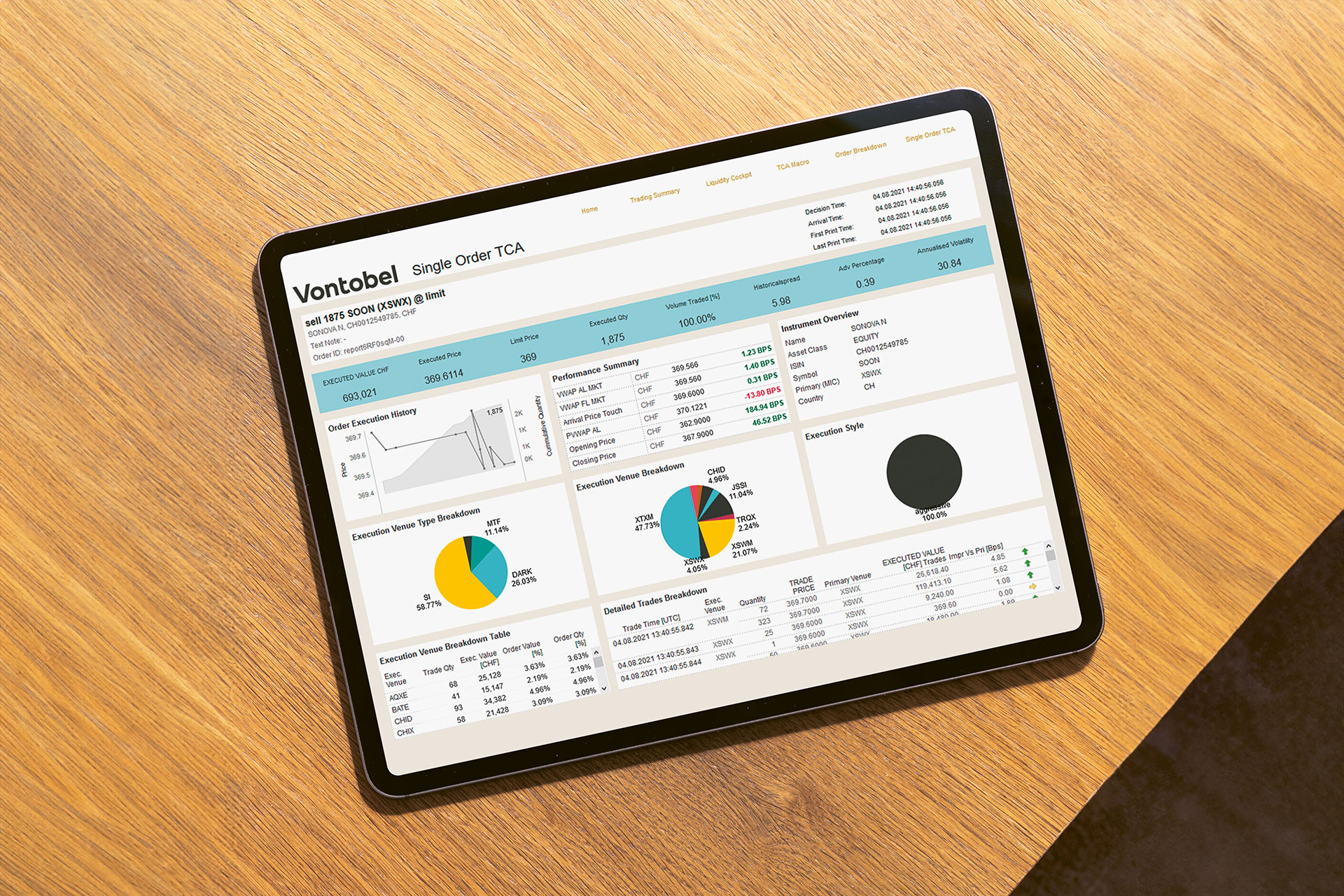Vontobel @ TradeTech 2023
Published on 09.01.2023 CET
Together with Roman Würsch, Head of Product Development, and Andreas Otth, Head of Salestrading, I was delighted to spend time at Trade Tech in Paris. Below you find a summary of what we believe may be important.
State of the industry
Overall, Covid has not hurt the industry in terms of innovation. Considering the challenging environment, especially from a technical and risk perspective, significant progress has been made over the last three years. This applies especially to algorithms, RFQs and the implementation of data analytics tools. Innovation is being driven primarily by the sell-side or non-bank/technology participants in the race to improve quality in the industry. Some representatives of the sell-side recommend that the buy-side proactively engages in conversations and seek more dialogue with innovators.
The innovation wheel will turn faster in the future; agile leadership and adaptation to new circumstances will be key. The general state of the global economy is likely to lead to massive government interventions that will diminish the efficiency gains achieved by technology in recent years.
Global buy-side perspective
The end client must be strictly the focus - the sell-side must be told that these needs are critical and affect both sides. It is important that retail flows are not going to be abused for any type of ELP or traded against CRBs. Navigating the liquidity landscape is key, as is educating buy-side traders, either through sell-side or dedicated professionals. The landscape has changed, and market participants need to adapt quickly.
TT = Tech & Trust, or people and machine, is becoming more important after the difficult times. That's why it's important to actively visit business partners. Work as a team (buy-sell - and the tech side) and joining working groups is key. The value of being physically present in the office was completely underestimated by the industry.
«While home office was a good experience, trading is about relationships as access to knowledge is key.»
Matthias Schiesser
Head of Distribution Electronic Trading Solutions
Three core themes have emerged
- liquidity
- technology
- relationships with providers
Three years ago, the focus was more on technology, while in the future relationships will become even more important. Trading desks will move to a cross-asset approach on the buy side.
Global sell-side perspective
Tech and sell-side should act as enablers. Off-LIT liquidity continues to grow. Meanwhile, RFQ platforms are gaining massive market share. Finding liquidity in different asset classes and understanding the pricing process and costs are handled in different ways. The quality of liquidity is becoming more important. Focus is on improving RFQ and IPO processes is key. Another focus area will be bond and non-equity. This will increase efficiency as well as helping clients make the right decisions (e.g., algo-wheel). Watch the equity auction space (for example Tradeweb), which currently appears to be one of the fastest growing segments (albeit still at a low level - but that will be the future in our view). Business can be grown by expanding (geographic) access to different markets and assets. More focus on technology, execution quality and the customer (trust!).
TAL and MOC
Trading at last (TAL) and trading at close were major themes. There is a trend towards internalization of MOC flows. The volumes of closing auctions continue to increase, but at the price of higher costs. The price is usually set in the last 15 seconds before the close of trading. Aquis appears to be one of the most innovative player in this space. The exclusivity of the exchanges for the last print is questioned due to the high prices and innovation. TAL: The sell side does not really support TAL as it increases working hours (which is exactly the opposite of what young talent expects). Currently it is only basis points in terms of ADV. Aside from the impact on working hours, TAL can be useful for trading small and midcaps and only to a lesser extent for big caps.
Data analytics
Legacy systems are a challenge (how to integrate data analytics into EMS/OMS?). The data volume is simply too high to manage. It is vital for both the buy and the sell sides to visualize the important bits and pieces so actionable insights can be gained. Data is not always used properly. It takes experts who can work with the end user to define what is needed. Otherwise, you can get lost. Seamless workflows and visualization are key.
TCA
Real-time data analytics (not only after, but also before and during trading) will be the future in the long run. This will help the trader act during the trading period of an order. TCA as a service was not discussed in the panels, but I had several conversations with customers, colleagues and competitors, and the feedback was clearly positive. Finding TCA standards for each asset class may be the right solution; a "one fits all" approach is not an option, according to the experts.
Fixed income securities in particular pose a challenge due to the lack of reliable data. Should the regulator set standards or leave it to the industry? Participants agreed that banks should remain self-regulated in this area, as there are too many trading venues, ELPs and other factors that need to be considered. It is critical that the buy side provides feedback and asks questions to fully understand the outcome of a TCA. Therefore, education on both sides is key. Code optimization can help increase speed.
HR / War for talent
The war for talent will increase massively as tech, fintech and other non-banks/brokers raise the level of competition on the HR side. Digital transformation of the workforce is critical, many experienced traders will leave the industry in the next 10-12 years. Younger talent is harder to attract and retain in technology. Massive changes in skills are needed to meet the new reality. While the number of execution traders will decline, there will be a growing number of data analysts, technicians, and customer-facing sales traders in the coming years. Workflow relationships are key - work agilely, not by organizational charts.
The industry requires an Elon Musk moment in technology and significant effort from market participants both from buy- and sell-side.
It all starts with a personal conversation
Published on 09.01.2023 CET
ABOUT THE AUTHORS
 Show more articles
Show more articlesMatthias Schiesser
Head of Distribution Electronic Trading Solutions
Matthias Schiesser heads the Electronic Trading Solutions department in the Transaction Banking unit at Vontobel. He is responsible for the distribution of Vontobel’s electronic Low-Touch Trading Platform, Global Custody, and FX products.





